Covering of the Runic Stones in Jelling by NOBEL Arkitekter
These bronze and glass chambers by Danish studio NOBEL Arkitekter protect two ancient runestones in Jelling, Denmark, from the elements.
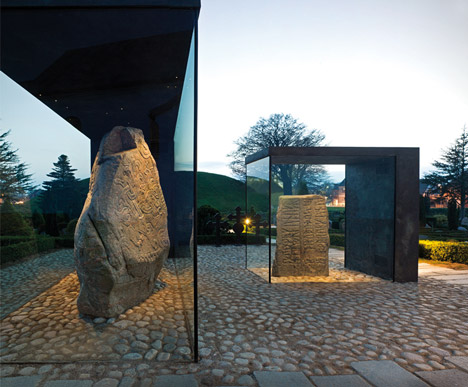
Located on a World Heritage Site, the two Jelling stones are over a thousand years old and the largest one was carved to mark Denmark's conversion to Christianity.
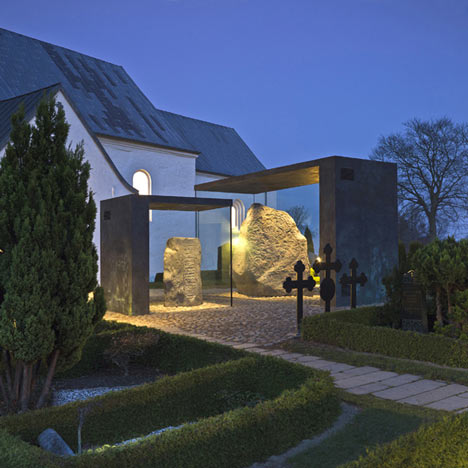
The chambers create a controlled internal environment, with heating and ventilation systems concealed within the bronze walls that fold up and over each stone.
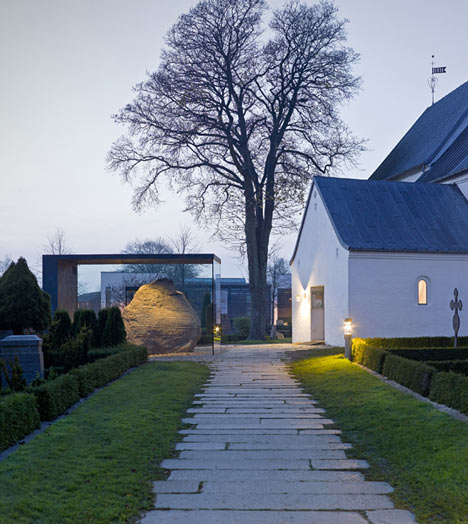
"Our objective was to accentuate the runic stones curved forms with the straight lines of the coverings," explains architect Erik Nobel, "and, in a metaphorical sense, to hold our hand over the runic stones".
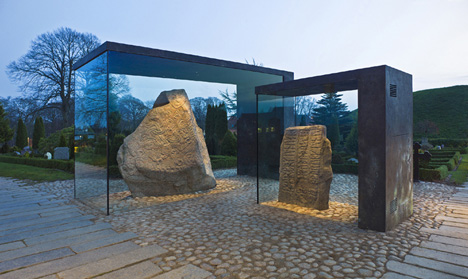
English stone circle Stonehenge has also been in the news this week, as construction began on a new visitor centre.
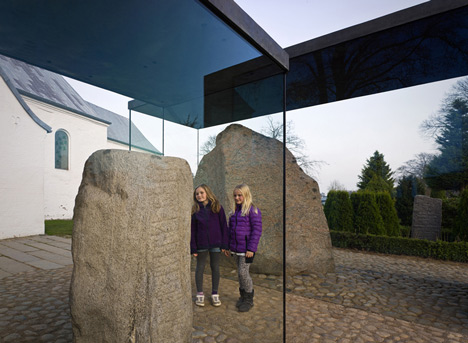
Photography is by Jens Lindhe, apart from where otherwise stated.
Here's some more information from Nobel:
Covering of the runic stones in Jelling ‐ Denmark
The project consists of two bronze structures which covers the unique runic stones and secure and preserve them for the future. The runic stones mark Denmark’ transition to Christianity in year 965, and the monument is also known as Denmark’s “birth certificate”. The monument is included on UNESCO’s list of World Heritage. The project was inaugurated in December 2011 and it is based on the winning competition project made by NOBEL arkitekter in March 2010.
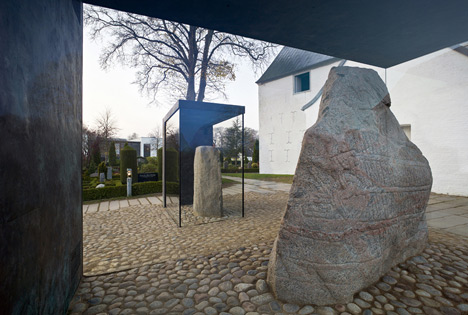
The architectural composition emphasizes the experience of the runic stones, and forms a stylized dialogue between the two stones, which represents the first two kings of Denmark – Gorm and Harald Bluetooth. The bronze angles form one gable and the roof for each runic stone, while the other sides are designed with large glass surfaces. The coverings provide an architectural composition and allow spectators to get very close to the runic stones.
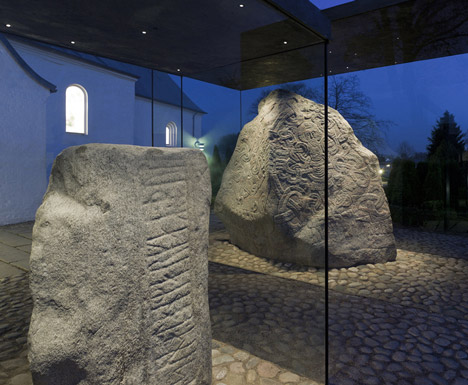
Our objective was to accentuate the runic stones curved forms with the straight lines of the coverings and, in a metaphorical sense, to “hold our hand over the runic stones”. The cast bronze emphasize the texture of runic stones and highlights the grey and reddish granite surfaces.
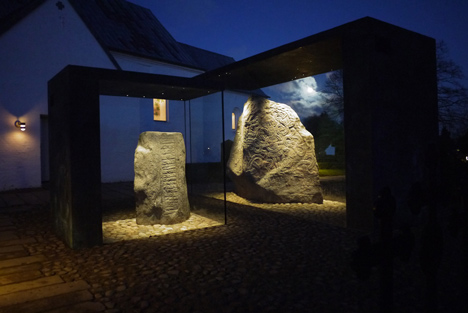
Above: photograph is by the architects
The requirement related to creating a controlled climate around the two runic stones was an integral consideration in the development of the project. Our consulting engineers from Rambøll contribute with the technical details for the heating‐ and ventilation‐system, which ensures a frost‐free climate around the runic stones.
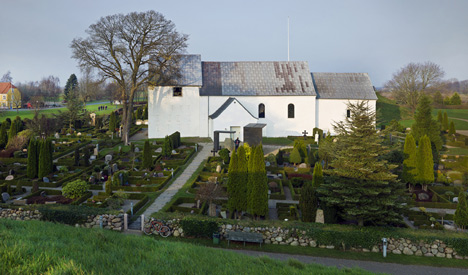
The artificial lighting is made with special designed fiber light sources, which are integrated in the roof structure. The lights emphasize the runic scripture, visual motifs and highlight the shape of the runic stones. Together with the bronze angels the artificial light creates a completely new way of viewing the rune stones and staging the experience of one of Denmark's most valuable monuments.
Address: Jelling Kirke, Thyrasvej 1, 7300 Jelling
Client: Danish Agency for Culture and Jelling Church
Architect: NOBEL arkitekter a/s
Engineer: Rambøll A/S
Year: December 2011